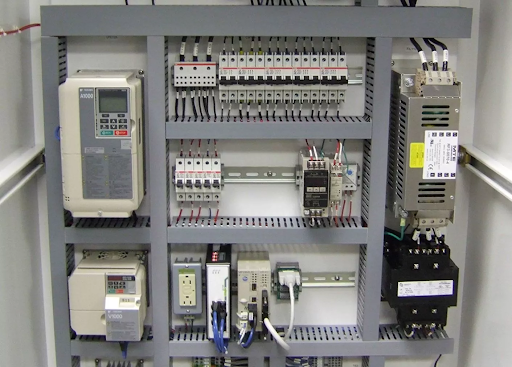A Surge Protector or Surge Suppressor, occasionally optimistically called a swell protection, is a device fitted in the interspersing current( AC) mileage line and/ or telephone line to help damage to electronic outfit from voltage harpoons, or transients. A more accurate term for this type of device is flash suppressor. A typical swell suppressor is a small box with several mileage outlets, a power switch and a three- line cord for plugging into a wall outlet.
In most countries where the effective AC mileage voltage for electronic outfit is 110 to 120 volts, the peak voltage is on the order of plus or disadvantage 160 to 170 V at a frequence of 60 hertz( Hz). But transients, which arise from colorful causes, generally reach peak situations of several hundred volts. These beats are of short duration, measured in forevers– units of 10- 6 seconds– but they can beget tackle to malfunction in that time. The worst type of flash occurs when lightning strikes in the vicinity and it doesn’t need to strike a power line directly. Such a shaft can peak at thousands of volts and beget endless damage to the outfit.
How a Surge Protector Works:
When an unforeseen increase in voltage occurs, similar as from a lightning strike or damage to a power line, a swell protection detects the redundant current and safely diverts it through the house’s grounding path. A simple statement and it sounds great, but what does it mean? How does swell protection know how to do this? To understand that, we just need to simplify a little language.
The Vagueness of Electrical Vocabulary:
Understanding voltage and amperage can help you better grasp how swell defenders work:
- Voltage: Using the analogy of water in a sock, voltage is the fellow of electrical pressure.
- Amperage: Using the same analogy, amperage is the inflow rate, or quantum of fluid running through the sock.
Excising the Excess:
Using our safe sock analogy, applying too important pressure in a sock can ultimately beget it to burst. In the situation of electrical surpluses, still, rather than bursting, electrical lines and appliances burn up or at the veritably least wear down over time. By diverting redundant pressure in the sock( your home’s cables), swell defenders guard wiring and appliances. To negotiate this, they need the help of special factors.
Managing the Pressure:
How is all that pressure or redundant electrical energy diverted? When voltage reaches a certain point, swell defenders simply re-route that redundant energy with the help of what’s basically a pressure-sensitive stopcock. With the correct voltage, current overflows through as normal, but with a shaft or swell, the device kicks in incontinently and redirects the excess. Generally used bias for managing this pressure in swell defenders include essence oxide varistors( MOV) and gas discharge arrestors, which allow electrical bias to continue operation while diverting redundant energy to resting cables.
Multi-Layered Protection:
Due to the nature of swell protection bias, all three of the following swell protection types or at least Type 2 and Type 3 bias- are demanded for acceptable protection
- Type 1 Whole House Protection: Installed between the power lines in the road and your cadence.
- Type 2 Whole House Protection: Installed between your cadence and swell box.
- Type 3 Point- of- Use: Lower defenders at wall outlets where you plug- in appliances.
Why do I even need a Surge Protector or Surge Suppressor?
Good question! It seems like a gratuitous expenditure and budget drain. They ’re far more useful than you ’d suppose, though – particularly when faced with the realities of cargo slipping. According to a blog published on the JohnC. Flood website, “( s) appetite defenders absorb redundant voltage into essence oxide varistors. Which also divert it safely to the ground line. So your electronics don’t get zapped with too important voltage. You need swell defenders to help the swell from traveling downstream to the bias plugged into the swell protection.
Simply put in countries where there’s a stable power grid, swell protection is n’t that much of a demand. In places like South Africa, however, we’ve regular and frequent cargo slipping. When the power is eventually restored, there’s frequently a swell of electricity. However, there’s a chance that the performing voltage change will damage them( or indeed fry them). If your cool appliances and outfit – like that nice new flat screen television or that candescent new laptop – are plugged in to the mains. An intention is to open bias during cargo slipping, but you are n’t always home when that happens. And cargo slipping is n’t always predictable. This is where swell protection offers a modicum of consolation and peace of mind.


